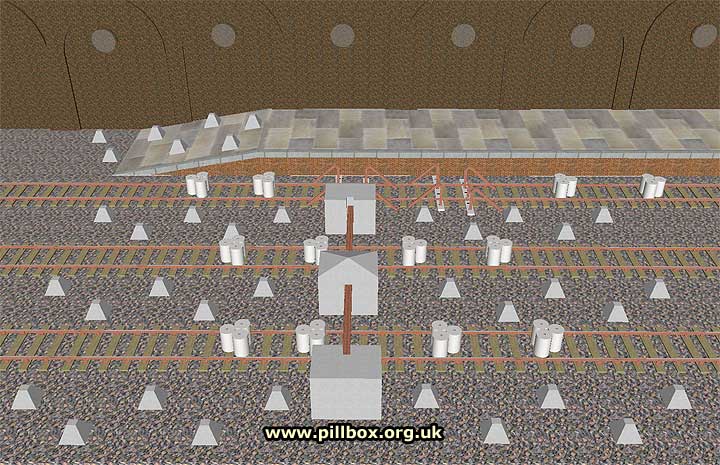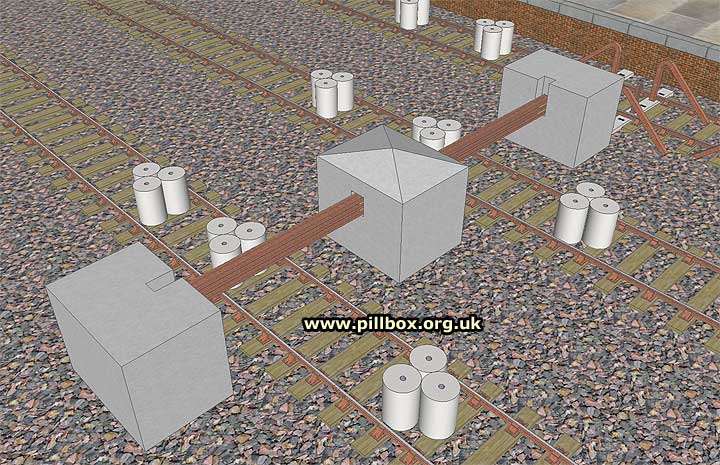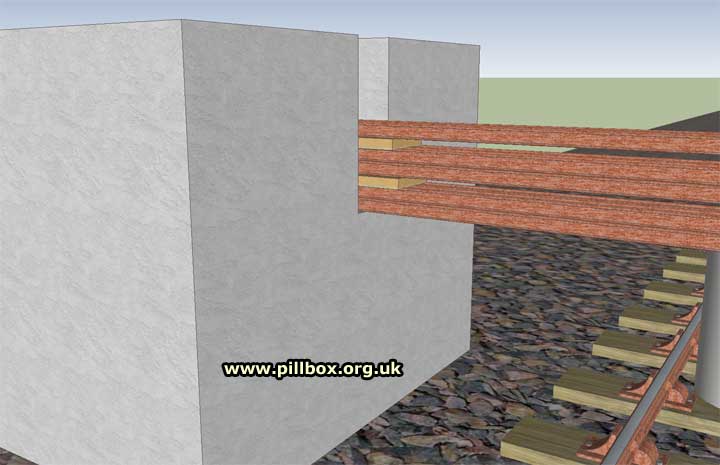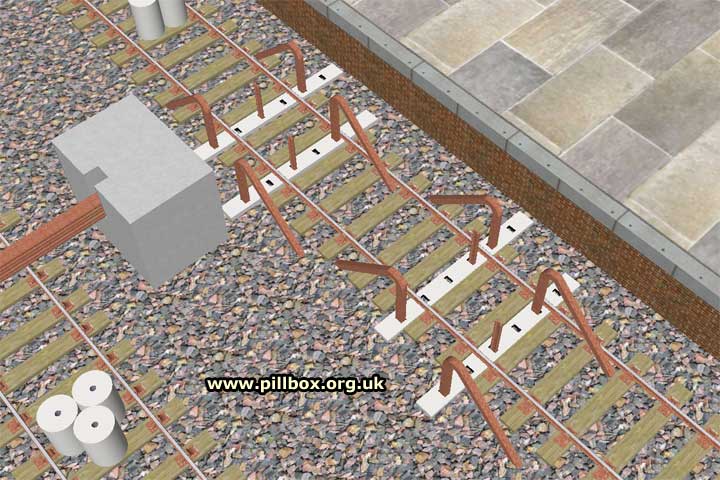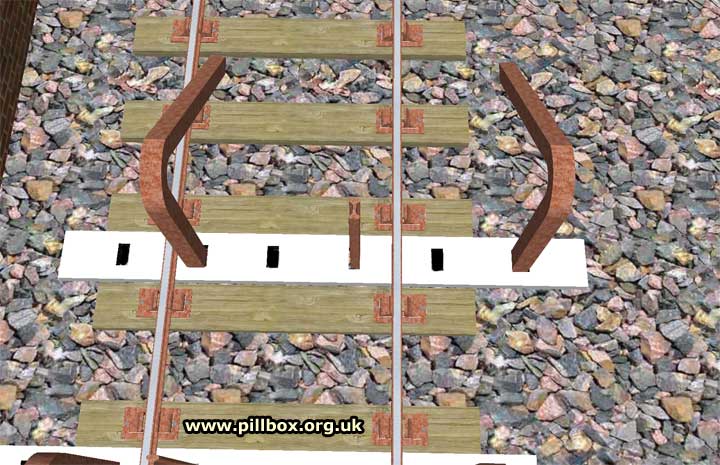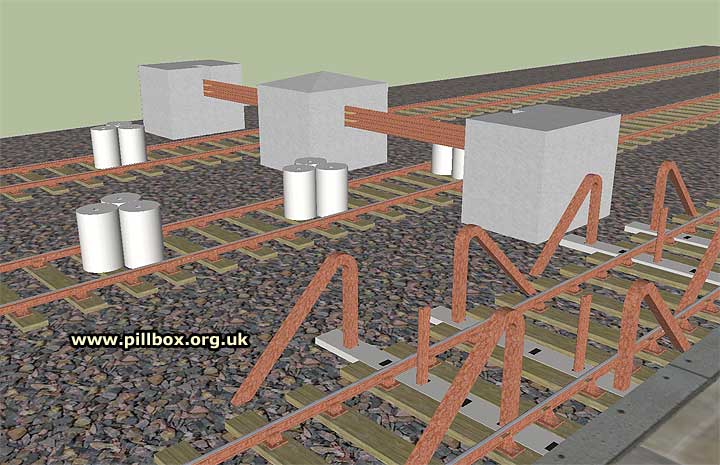Rail blocks
Posted: 16 October 2010 20:18
My research has so far revealed the locations of over 600 roadblocks in East Sussex. However, railway lines were also blocked using similar methods, but I've never really investigated rail blocks to date.
I know that there were at least 51 rail blocks, seven of which had been removed by the time the 1941 rail block report. This report has proved very useful, as it contains thumbnail sketches of the layouts of each block. These inspired me to knock up a Google Sketchup model of some of the means by which total disruption to British railway network was to be wreaked by the army and Home Guard long before Railtrack was devised in the 1990's seemingly with the same purpose in mind.
The model I constructed is based loosely around elements of the defences of Newhaven, a major port installation in East Sussex. The basic layout is shown below; the surroundings are semi-fictional but the layout of the rail block across three tracks is accurate. This block was unusual in that it comprised two different types, the standard hairpin rail and sockets method as well as horizontal rails placed between large concrete buttresses. Pimples (not shown below for clarity) and cylinders completed the block.
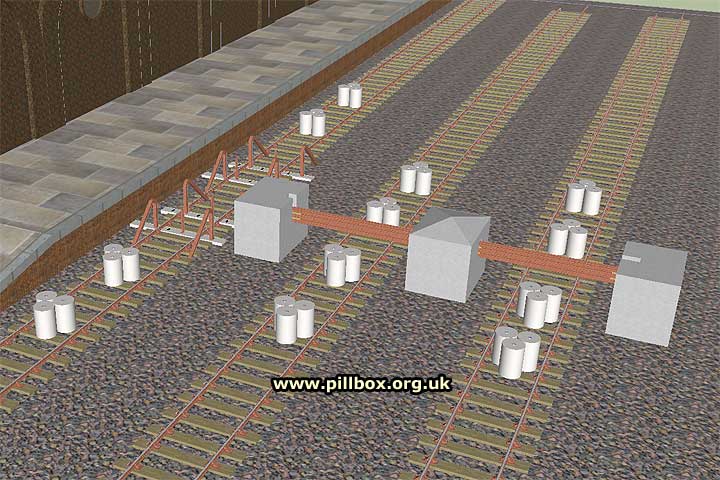
The hairpin rails were identical to those deployed at roadblocks, but the sockets were actually within a precast concrete beam that was dug into the track bed by railway engineers. Vertical rails were also used; sockets not intended to be used were filled with cement. It is unlikely that any of these socket beams are still in situ as regular track maintenance and re-laying of the track bed would have made their removal necessary.
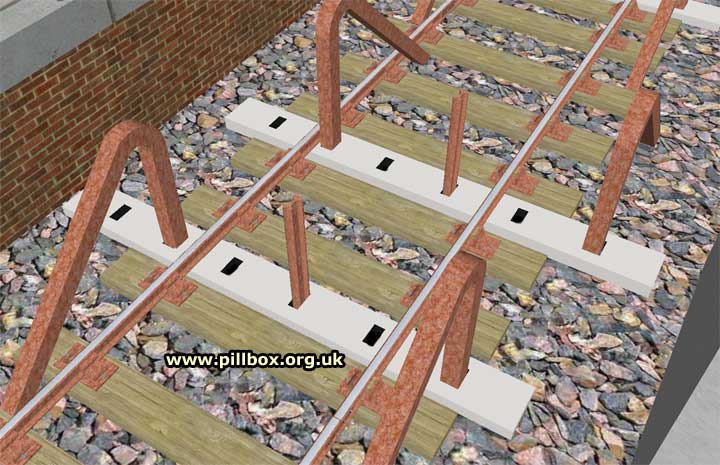
The horizontal rail method simply required ten lengths of rail to span each track. The rails were placed flat on their side in pairs in slots cast into the buttresses. The rails would be stacked two high and wooden blocks placed on top before another two layers of rails with more blocks and finally one more pair of rails on the top. Given the weight of each rail, this method must have been hard to implement in a hurry, compared to the hairpin rails that could each be lifted into place by four men.
So why block railway lines? The answer is simple; railways offered German tanks direct routes that were flat and able to support heavy rolling stock. Here at Newhaven, these tracks were on the quayside and so a series of four blocks was established to prevent this expanse of land providing quick access up the line and into the hinterland.
High embankments and railway cuttings were potential deathtraps for tanks anyway, but lines were often blocked at bridges (particularly where they crossed rivers designated as stop lines) and at other strategic points.
The Video
The video at right is a flythrough of the rail block from different directions, showing various features.
The layout of the pimples is speculation; Canadian documents give a rough location for them and I think they would have been placed as part of this block.
Wherever they were, the engineers appear to have had an awkward task in carrying all the materials across the tracks!
- Pete
Photograph gallery

Email:
Blog Latest

Bishopstone reveals its pillbox secrets
18 October 2021

Pillbox or Observation Post?
10 June 2020

Uncovering the hidden secrets of a pillbox
8 June 2019

Review of 2018
31 December 2018

Wartime Christmas in East Sussex (2)
24 December 2018
Jargon-buster
Cylinders
Reinforced concrete cylindrical obstacles with a shaft down the centre in which could be inserted a crowbar for manhandling, or a picket for barbed wire. Cylinders were 90cm high and 60cm wide and deployed in groups of three as a more effective alternative for buoys.

Pimples
Small anti-tank block in the form of a truncated pyramid. Pimples were used to extend anti-tank obstacles and roadblocks and were intended for use on soft ground.
Sockets
Concrete-lined shafts dug into road surfaces into which rails or RSJs (hairpin or straight) could be inserted to form a roadblock. When not in use, a wooden cover was placed over each socket.
Stop line
A physical continuous anti-tank barrier, normally a river and/or railway line, often defended by pillboxes. Stop line crossings (roads, railways and bridges) were to be made impassable.
This site is copyright © Peter Hibbs 2006 - 2024. All rights reserved.
Hibbs, Peter Rail blocks (2024) Available at: http://www.pillbox.org.uk/blog/216669/ Accessed: 19 April 2024
The information on this website is intended solely to describe the ongoing research activity of The Defence of East Sussex Project; it is not comprehensive or properly presented. It is therefore NOT suitable as a basis for producing derivative works or surveys!
